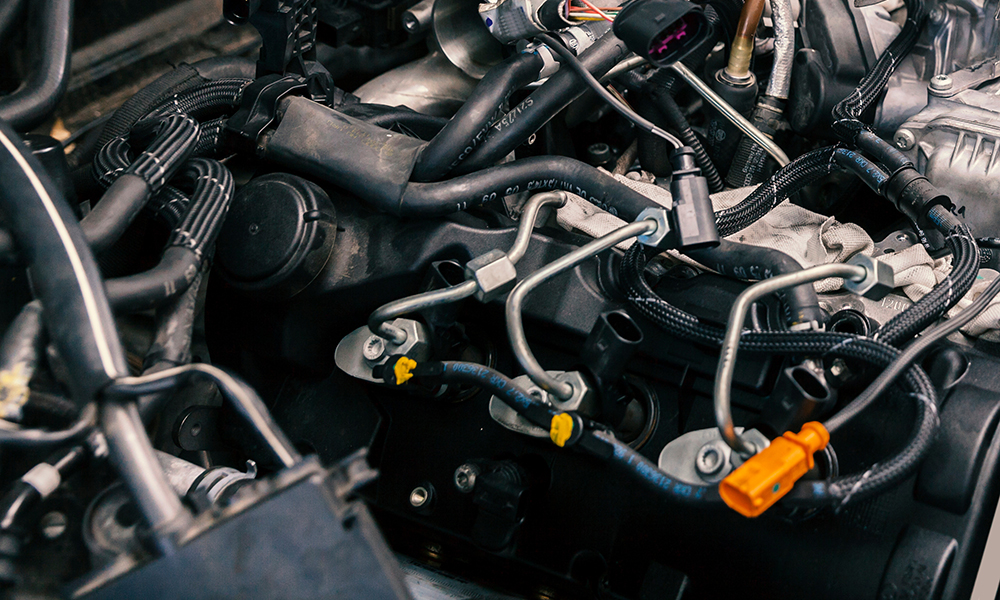When To Change Gearbox Oil: What You Need To Know

Are you aware of what keeps your vehicle’s transmission system running smoothly? It’s a crucial yet often overlooked component that ensures your gears shift seamlessly and your vehicle performs optimally.
We’re talking about gearbox oil – a vital element in your car’s internal mechanics. From identifying the signs that your gearbox needs maintenance to finding cost-effective, efficient solutions, we’re here to talk about all the ins and outs of your gearbox oil. Let’s get straight into it.
Understanding the Importance of Gearbox Oil
Every gear shift, every acceleration, every journey – your gearbox oil makes every single one happen seamlessly. Neglecting this essential liquid can lead to a whole host of troubles.
When you overlook your gearbox oil, you’re inviting issues such as: grinding gears, increased friction, and potentially even costly repairs becoming a real threat. But let’s not dwell on the negatives. On the flip side, regular gearbox oil changes means embracing a smoother, more responsive driving experience. It’s the key to maintaining peak performance of your vehicle.
Gearbox oil works tirelessly to reduce the stress on your gearbox, preventing grinding gears and metal-to-metal contact. But like all lubricants, it needs replacing to prevent debris buildup that could clog the filter and damage components.
Running low on gearbox oil can cause your transmission to shift improperly or not at all. You might experience missed gears or feel a grinding sensation while driving. Inadequate oil levels can permanently damage your gearbox, leading to expensive repairs – definitely not ideal.
Plus, neglecting regular maintenance like gearbox oil changes can result in even pricier repairs or replacements down the line. Additionally, you’ll face reduced fuel efficiency due to decreased performance from an ageing transmission system.
How Often Do I Need a Gearbox Oil Change?
Your gearbox oil level should remain relatively steady between changes. If you find yourself needing to top it up significantly to reach the correct level, it’s time to have a proper inspection and search for leaks. While the frequency isn’t an exact science, most manufacturers recommend changing your gearbox oil every 30,000 to 50,000 miles.
However, if you often drive in harsh conditions, such as stop-and-go traffic or extreme temperatures (quite unlikely in the UK!), then you might need to change the oil more than the average driver. Similarly, if your vehicle is regularly used for towing heavy loads or off-roading, this extra strain can accelerate wear and tear on your gearbox. In these cases, it’s wise to change the gearbox oil at least every 30,000 miles.
Keep an eye on your driving conditions and adjust your maintenance schedule accordingly to keep your gearbox in top shape.

Signs the Gearbox Oil Needs Changing
Recognising the signs that your gearbox oil needs changing can save you from costly repairs and keep your vehicle running smoothly. Here are the key indicators to watch out for:
- Burning Smell: A burning smell is often a clear indicator that your gearbox oil needs attention. This odour usually means the oil is breaking down and losing its ability to lubricate and cool the transmission properly. If you notice this smell, it’s time to check and possibly change your gearbox oil.
- Fluid Leakage: If you see puddles or spots of oil under your vehicle, it could be a sign of a gearbox oil leak. Gearbox fluid leaks are serious and need immediate attention to prevent severe damage to your transmission system.
- Warning Light: Many modern vehicles have dashboard warning lights that signal when there’s an issue with the transmission. If your transmission warning light comes on, it might be due to low or degraded gearbox oil.
- Difficulty Shifting Gears: If you experience trouble shifting gears, such as gears sticking or not engaging smoothly, it could be due to old or insufficient gearbox oil.
- Unusual Noises: Grinding, clunking, or whining noises coming from your transmission are strong indicators that your gearbox oil may need changing. These sounds can occur when the oil is contaminated.
- Transmission Slipping: If your transmission slips in and out of gear while driving, it could be due to low gearbox oil levels or dirty oil. Slipping gears can lead to loss of power and control, making it crucial to address this issue promptly.
- Slow or Irregular Shifting: Delayed or irregular shifting patterns can signal that your gearbox oil needs replacement.
- Dark or Dirty Fluid: Checking the colour and condition of your gearbox oil can also tell you if it needs changing. If the oil appears dark, dirty, or has a burnt smell, it’s a clear sign that it’s time for a change.
However, if you keep up with regular servicing, you shouldn’t get to the point where you’re spotting these symptoms.
How to Check Your Gearbox Oil Level
One effective method for assessing your oil’s health is to inspect its colour. Fresh oils are typically brightly coloured and semi-transparent. However, as they degrade or accumulate deposits over time, they darken, lose transparency, and may emit a burnt smell due to oxidation.
To check your gearbox oil:
- Warm Up Your Engine: Your engine needs to be running, and your oil should be warm for an accurate dipstick reading.
- Locate the Dipstick: Open the bonnet and locate the transmission dipstick, usually positioned near the back of the engine compartment.
- Inspect the Oil Colour: Pull out the dipstick from the filler tube and examine the colour.
- Wipe and Reinsert: Wipe the dipstick clean with a cloth or towel, then reinsert it into the tube. Pull it out again to check the oil level.
- Check the Level: Most dipsticks feature a ‘cross-hatch’ pattern or ‘hot’ and ‘cold’ lines indicating the optimal oil level. Ensure the oil level falls within these markers; it should never exceed the ‘hot’ line.
If your oil appears dark brown, black, or light pink (indicative of water contamination), it’s time for a change. On the other hand, red-brown, semi-transparent fluid may be slightly degraded but doesn’t necessarily require immediate replacement.
If you’re unsure about whether it’s time for a top-up, speak to a professional. From an Audi to a VW, gearbox oil changes are a quick fix for our specialists at Vasstech. Speak to us today for an honest, reliable service of your car’s inner workings.
Manual Gearbox Service vs. Automatic Gearbox Service
When it comes to maintaining your vehicle’s transmission, whether manual or automatic, there are key differences in how you handle transmission fluid.
Automatic Transmission Service
In automatic vehicles, transmission fluid is often labelled as “lifetime” fluid, suggesting it doesn’t require changing. While this fluid is designed to last the life of the transmission, changing it at regular intervals can significantly extend the transmission’s lifespan. We recommend replacing automatic transmission fluid every 60,000 to 70,000 miles to ensure optimal performance and longevity.
Manual Transmission Service
Manual vehicles also require transmission fluid changes, but the frequency depends on the manufacturer’s recommendations, however it’ll typically be around 50,000 miles. Dirty fluid in a manual transmission can make gear shifting more difficult, putting extra strain on the transmission components. Regular fluid changes are essential to maintain smooth gear transitions and prevent premature wear and tear.
By staying proactive with transmission fluid maintenance, whether manual or automatic, you can ensure your vehicle’s transmission operates smoothly and reliably for miles to come.
Smooth Shifts, Smooth Servicing
Proper gearbox maintenance is non-negotiable. So get it done right with the experts.
At Vasstech, our professional technicians are here to help you with all your gearbox servicing needs. Book your appointment today and let us ensure your gearbox is in optimal condition for your next adventure on the road.


